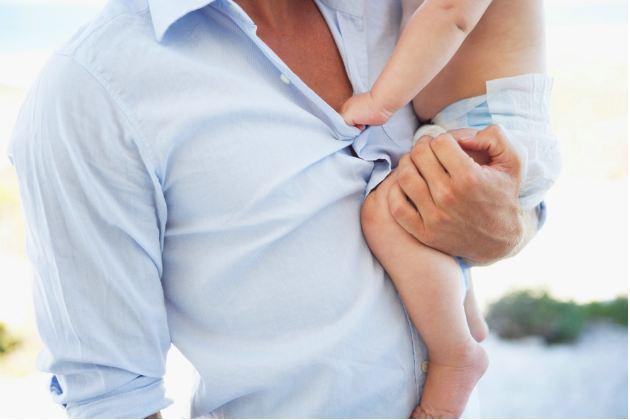Hypospadias

Hypospadias is a condition that affects the development of the urethra – the tube that carries urine from the bladder to the outside of the body. It causes the opening of the urethra to develop in the wrong place.
About hypospadias
Symptoms of hypospadias
Complications of hypospadias
Causes of hypospadias
Diagnosis of hypospadias
Treatment of hypospadias
Special considerations
About hypospadias
Hypospadias is a condition that baby boys are born with. Around one in 300 boys in the UK are born with hypospadias. It affects the way the urethra develops. The urethra is the tube that passes urine and semen out of the body. It runs from the bladder through the prostate gland and along the centre of the penis.
While in the womb, your unborn son's penis grows in length, and his urethra develops inside. Hypospadias means that your son’s urethra doesn't develop properly and the opening (meatus) through which urine is passed doesn’t come out at the tip of your son’s penis. Instead it opens at another area of his penis.
Types of hypospadias
There are several different types of hypospadias, depending on where the opening of your son’s urethra is positioned:
- glanular hypospadias – the urethra is within the head of his penis (glans)
- coronal and subcoronal hypospadias – the urethra is just below the glans
- penile hypospadias – the urethra is on the shaft of his penis
- penoscrotal hypospadias – the urethra is close to his scrotum (the loose bag of skin containing his testicles)
Glanular, coronal and subcoronal hypospadias are the most common types.
If your son has hypospadias, he may also have other associated problems, including:
- hooded foreskin – the foreskin doesn't develop properly on the underside of your son's penis, creating a hood of skin at the top
- chordee – the skin on the underside of your son's penis is too tight so it appears bent, especially when it's erect
The further back the opening of your son’s urethra is, the more severe these problems may be.
Symptoms of hypospadias
You may notice that your son's urine doesn't come out of the tip of his penis. However, this can be difficult to spot if your child is in nappies or the condition is very minor. If you’re concerned, talk to your GP.
As your son gets older, he may find it difficult to direct his urine stream and need to sit down to pass urine. Also, his erections may be bent and uncomfortable, making sexual intercourse in adulthood difficult.
Complications of hypospadias
Hypospadias can be associated with other conditions, most commonly:
- undescended testes – this is when your son's testicles don't move down into the scrotum, where they should both be, by the time he is one year old
- inguinal hernia – this is a lump in your son’s groin that happens when part of his intestine pushes through a weakness in the muscles of his abdominal wall
Very rarely, a combination of hypospadias and undescended testes can be a sign of an intersex condition. This is when an underlying sex development disorder causes uncertainty over the gender of a child. Speak to your GP for more information.
Causes of hypospadias
The exact causes of hypospadias aren’t fully understood at present. However, it’s thought that it could be related to the following factors.
- Genes – the condition may be passed down in families.
- Environmental factors, such as chemicals that mimic our hormones or interfere with the way they work. These chemicals can be found in some everyday products, such as plastics, pesticides and some foods and drinks such as soy products and cows milk.
- Being exposed to certain hormones in the womb. Boys are five times more likely to have hypospadias if they were conceived through in vitro fertilisation (IVF).
- Being born prematurely with a low birth weight. However, the exact reasons for this aren’t understood.
Diagnosis of hypospadias
Usually hypospadias is picked up during your son's first medical check (postnatal examination). However, if he has only very minor glanular hypospadias, it may not be diagnosed until he‘s older.
Once your son has been diagnosed with hypospadias, he will be referred to a paediatric urologist for treatment. A paediatric urologist is a doctor who specialises in identifying and treating conditions of the urinary tract in children.
If your son has a more severe form of hypospadias, he may need to have an ultrasound scan to examine his kidneys and bladder and check they are working properly.
Treatment of hypospadias
If your son has only minor glanular hypospadias, he may not need any treatment other than regular monitoring.
Surgery
More severe types of hypospadias are treated using corrective surgery. Surgery is commonly carried out when your son is aged between 10 and 18 months. Alternatively surgery can be done at around four years of age, shortly before your son starts school. However, some parents choose to leave the operation until their son is old enough to decide for himself.
Surgery aims to:
- create a urethral opening at the tip of your son’s penis
- straighten your son’s penis
- allow your son to pass urine standing up
- make your son’s penis look as normal as possible
If your son has minor hypospadias, he will usually only need one operation. However, if he has more severe hypospadias, he may need to have two separate operations. These usually take place six months apart.
For more information, please see our factsheet on surgical correction of hypospadias.
Special considerations
Your son's foreskin may be used to reconstruct his urethra during the operation, so it's important that he isn't circumcised before this operation.
This section contains answers to common questions about this topic. Questions have been suggested by health professionals, website feedback and requests via email. See our answers to common questions about hypospadias, including:
How will I know if my son has hypospadias?
Is the number of boys being born with hypospadias still increasing?
Does my son need to have surgery to correct his hypospadias?
How will I know if my son has hypospadias?
It can be quite difficult to spot if your son has hypospadias, especially if he’s still in nappies or if his condition is very minor. However, there are a few things that you can look out for.
Explanation
Hypospadias is a congenital condition, which means that your son is born with it. So there aren't necessarily any symptoms or changes that you will notice. Recognising hypospadias is often made more difficult if your son is in nappies or his condition is only very minor.
However, there are some signs to look for. As a baby, you may notice that urine doesn't come from the centre of the tip of your son’s penis (glans). It may come from just below or further down the shaft. Also, he may have a hooded foreskin or his penis may not be straight. Depending on the severity of your son's condition, these signs may be minor or very noticeable.
As your son gets older, he may find it difficult to go to the toilet standing up. If his urethral opening is quite far down his penis it may be difficult for him to project and aim his urine into a urinal, or the opening may be so far down that he is not able to do this at all and needs to sit down to go to the toilet.
If you have any concerns about your son's penis, it's important to see your GP as soon as possible.
Is the number of boys being born with hypospadias still increasing?
The number of boys being born with hypospadias did increase from the 1960s to the 1980s in the UK and Europe, but since then numbers have stabilised.
Explanation
During the 1960s, 1970s and 1980s there was an increase in the number of boys born with hypospadias in the UK and Europe, peaking in 1983. A recent report suggests that this trend is no longer continuing.
Doctors are unsure as to why the number of boys with hypospadias increased. It was at first assumed that the increase was due to a better detection rate but this alone doesn’t account for the rise.
A number of different theories have been put forward to explain the rise, including chemicals in our environment that interfere with our hormones, and being exposed to hormones in the womb.
Does my son need to have surgery to correct his hypospadias?
Surgery isn't always necessary to correct hypospadias, especially in minor cases. Your son's paediatric urologist will be able to advise you on the best treatment option.
Explanation
Hypospadias can affect your son's penis to different degrees depending on where the opening of the urethra is positioned. This can range from glanular hypospadias, where the opening is located within the head of his penis (glans), to penoscrotal hypospadias, where it's close to his scrotum.
More minor types of hypospadias, such as glanular hypospadias, may not need any treatment other than careful monitoring. However, more severe types, such as penile and penoscrotal hypospadias, will require corrective surgery. This is not only because of the difficulties your son will have in directing his urine, but also because of other associated complications such as chordee. Chordee is when the skin on the underside of your son's penis is too tight so it appears bent, especially when it's erect.
If you’re concerned, talk to your doctor about the most appropriate treatment for your son.
Further information
-
Hypospadias UK
www.hypospadiasuk.co.uk
Sources
- Davenport M. ABC of General Surgery in Children: Problems with the penis and prepuce. BMJ 1996; 312:299–301. www.bmj.com
- An Assessment and Analysis of Surveillance Data on Hypospadias in Europe. Eurocat.
- www.eurocat-network.eu, published 2003
- Hypospadias. eMedicine. www.emedicine.medscape.com, published 2009
- Hypospadias – patient information guide. British association of plastic reconstructive and aesthetic surgeons. www.bapras.org.uk, accessed 19 April 2010
- Personal Communication, Mr Mark Woodward, Consultant Paediatric Urologist, Bristol Children's Hospital, 16 June 2010
Related topics
- Surgical correction of hypospadias
This information was published by Bupa's Health Information Team and is based on reputable sources of medical evidence. It has been peer reviewed by doctors. The content is intended for general information only and does not replace the need for personal advice from a qualified health professional.
Publication date: August 2010.
















